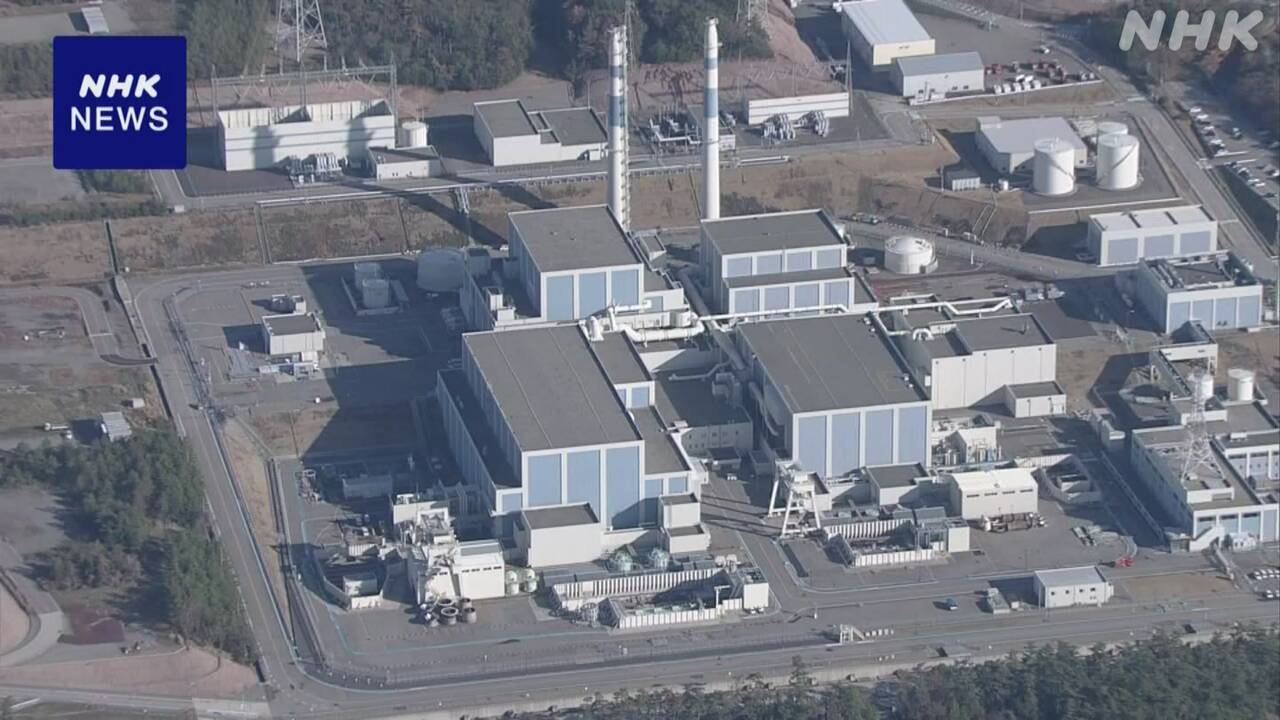After the Noto Peninsula Earthquake, some of the monitoring posts installed around the Shiga Nuclear Power Plant in Shiga Town, Ishikawa Prefecture temporarily became unable to obtain radiation dose data that would be used to determine whether residents should evacuate in the event of an accident. .
The Nuclear Regulation Authority and others investigated this and found that while batteries were installed to continue measurements in case of a power outage, there may have been issues with the measures, such as an emergency power supply for communication equipment not being secured. It turns out that there is.
Ishikawa Prefecture has installed 96 monitoring posts to measure radiation levels in order to decide whether to evacuate residents in the event of an accident at the Shiga Nuclear Power Plant, but the Noto Peninsula earthquake that occurred on January 1st this year After that, temporary data was no longer available in up to 16 locations.
These systems had redundant communication methods using wired lines and mobile phone lines, but previous investigations suggest that data could no longer be sent due to communication failures caused by power outages or other causes.
A detailed investigation by the Nuclear Regulation Authority and Ishikawa Prefecture into the cause of the communication failure revealed that 14 of the 16 locations had batteries installed to continue measuring radiation levels in case of a power outage. It was discovered that emergency power was not secured for equipment called routers, which are used to communicate via wired lines.
The routers at the remaining two locations had emergency power supplies, but the cables were cut due to the earthquake, and as a result, it appears that wired lines were no longer available at all 16 locations immediately after the earthquake. .
Furthermore, an analysis of the data transmission status revealed
that 10 of the 16 locations lost communication immediately after the earthquake, while
communication gradually became unavailable at the other 6 locations from early morning of the next day until two days later. .
These differences indicate the status of backup mobile phone lines
; in 10 locations, the cable connecting base stations appears to have been cut; and in
6 locations, base stations managed by mobile phone companies are in emergency use. It appears that the power supply has been exhausted.
Regarding monitoring posts, the Nuclear Regulation Authority has asked local governments to install emergency power sources and redundant communication lines, as data was missing one after another around the Tomari nuclear power plant during the 2018 Hokkaido Eastern Iburi Earthquake. , countermeasures were being taken.
The Nuclear Regulation Authority has stated that there may have been issues with countermeasures, and that they would like to proceed with improving power supply measures and establishing their own means of communication that does not rely on telecommunications carriers.
Multiplexing of communication methods required by the country What is the situation in each local government?
Regarding monitoring posts installed around nuclear power plants, there were a number of missing data in the vicinity of the Tomari nuclear power plant during the 2018 Hokkaido Eastern Iburi Earthquake, and the national government was asking local governments to multiplex communication methods.
Specifically, it will mainly involve a combination of three communication methods: wired communication such as terrestrial optical fiber, wireless communication such as mobile phones, and satellite communication, but it is up to each local government to decide which method to use. is to be determined according to local circumstances.
Regarding this issue, NHK interviewed 21 prefectures within 30 kilometers of nuclear power plants, where countermeasures are required, to learn about multiplexing methods.
As a result, in the four prefectures of Fukushima, Niigata, Shizuoka, and Ehime, some monitoring posts were equipped with three types of lines: wired, wireless, and satellite, providing a triple communication method.
In addition, all monitoring posts in 12 prefectures used a combination of wired or wireless and satellite as a means of redundancy.
On the other hand, five prefectures including Ishikawa Prefecture had dual wired and wireless networks.
Ishikawa Prefecture says it does not use satellite communications because it
is susceptible to weather conditions such as rain and snow, and
there is a risk that it may become unusable due to
communication congestion or antenna misalignment.
In fact, in the recent Noto Peninsula earthquake, Ishikawa and Toyama prefectures installed alternative equipment using satellite communications in places where data could no longer be obtained, but it was confirmed that there were times when the communication situation was unstable. That's it.

